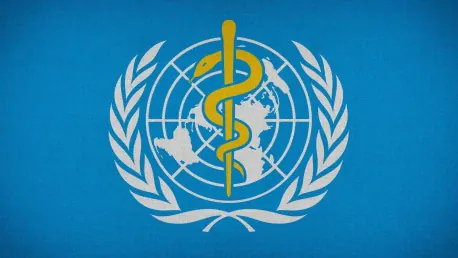The U.S. government’s decision to withdraw from the World Health Organization (WHO) has significant implications for healthcare Software as a Service (SaaS) and telemedicine providers. With the exit from WHO-aligned frameworks, new challenges arise in compliance, data management, and security for these providers. This decision marks a notable shift in the healthcare landscape, creating an environment of uncertainty and necessitating immediate adaptation to evolving regulations. As a result, SaaS and telemedicine companies must be prepared to navigate these changes while continuing to deliver high-quality, patient-centric services.
The impact of changing regulations cannot be overstated, as healthcare SaaS companies must now adapt to evolving federal and state policies that no longer align with WHO standards. This will necessitate regular technological updates to ensure compliance with new rules. In addition to regulatory changes, managing data exchange standards presents another critical challenge. Without WHO guidelines, exchanging patient information between systems and across borders will become increasingly complex. Healthcare SaaS providers and telemedicine platforms will need to ensure seamless interoperability while adhering to new data processing requirements. The importance of ensuring HIPAA compliance amidst these regulatory changes cannot be understated, as protecting patient information remains a top priority in a shifting legal environment.
Navigating Changing Regulations and Compliance
Healthcare SaaS companies find themselves at a crossroads, with the need to adapt to swiftly changing federal and state regulations taking center stage. As WHO-aligned policies are phased out, providers must stay vigilant and agile, ensuring their systems and software align with new government mandates. This process will demand regular technology updates and enhancements, potentially straining resources and increasing operational costs. Nevertheless, compliance remains non-negotiable, as noncompliance risks hefty penalties and damage to reputation. These companies must work closely with legal and regulatory experts to understand the nuances of new policies and implement changes accordingly. The dynamic nature of this regulatory environment necessitates a proactive approach, with technology investments being essential to future-proof their operations.
With the exit from WHO frameworks, managing data exchange standards becomes another formidable challenge. The WHO previously provided a cohesive set of guidelines for smooth, secure data exchange across borders and between systems. Now, with these guidelines no longer in place, healthcare SaaS providers and telemedicine platforms must develop new protocols to ensure seamless interoperability. This means creating robust, adaptable systems capable of handling disparate data formats and ensuring compatibility with a variety of international and domestic platforms. Moreover, the absence of unified standards will likely lead to increased scrutiny from regulators and stakeholders, necessitating stringent data handling and processing measures. Providers must invest in technologies that facilitate secure, efficient data exchange to maintain operational efficiency and uphold patient care standards.
Ensuring Data Security and HIPAA Compliance
Amidst the evolving regulatory landscape, maintaining data security and ensuring HIPAA compliance is more crucial than ever for healthcare SaaS and telemedicine platforms. These providers must enhance data security measures to protect sensitive patient information from breaches and unauthorized access. This involves implementing state-of-the-art encryption methods, robust access controls, and thorough auditing procedures. As regulations shift, companies must remain vigilant in updating their security protocols to reflect the latest requirements and best practices. Furthermore, staff training on data protection and compliance is essential to minimize human errors and bolster overall security posture. By prioritizing data security, healthcare providers can build trust with patients and stakeholders, assuring them that their information is safeguarded.
The advent of advanced technological solutions offers a pathway to effortlessly navigating the complex terrain of compliance and data security. Cloud-based platforms, for instance, can provide scalable solutions enabling real-time data access and streamlined compliance automation. These systems can be integrated with existing IT infrastructure to enhance flexibility and responsiveness to regulatory changes. Additionally, AI-driven analytics and Electronic Health Record (EHR) integrations can assist providers in identifying compliance gaps, optimizing operational efficiencies, and maintaining high standards of patient care. By leveraging these technologies, healthcare SaaS providers can not only meet current regulatory demands but also adapt to future requirements, ensuring their readiness to tackle any challenges that may arise.
The Role of Technology in Future-proofing Healthcare
The U.S. government’s decision to withdraw from the World Health Organization (WHO) carries significant consequences for healthcare Software as a Service (SaaS) and telemedicine providers. With this exit, new challenges in compliance, data management, and security emerge for these providers. This move represents a major shift in the healthcare landscape, creating uncertainty and necessitating quick adaptation to new regulations. Consequently, SaaS and telemedicine companies must be ready to manage these changes while continuing to provide high-quality, patient-centered services.
The impact of evolving regulations is considerable. Healthcare SaaS companies must now align with new federal and state policies, which don’t mirror WHO standards. This will require frequent technological upgrades to ensure adherence. Besides regulatory adjustments, managing data exchange standards becomes a critical issue. Without WHO guidance, the transfer of patient information across systems and borders gets more challenging. Healthcare SaaS providers and telemedicine platforms must ensure seamless interoperability and comply with new data processing norms. Ensuring HIPAA compliance remains crucial in this changing legal landscape, as safeguarding patient information is paramount.









